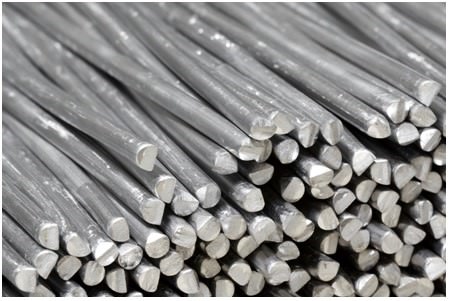How springs work
(Created page with "Springs are an incredible feat of engineering, and life wouldn’t be quite the same without them. Used in the vast majority of products and technology we utilise in day to day l...") |
|||
| Line 1: | Line 1: | ||
Springs are an incredible feat of engineering, and life wouldn’t be quite the same without them. Used in the vast majority of products and technology we utilise in day to day life, springs are relatively simple, but you may be wondering just how do they work? | Springs are an incredible feat of engineering, and life wouldn’t be quite the same without them. Used in the vast majority of products and technology we utilise in day to day life, springs are relatively simple, but you may be wondering just how do they work? | ||
| − | == [[File:Spring.jpg]] == | + | == [[File:Spring.jpg|link=File:Spring.jpg]] == |
== How Does A Spring Operate? == | == How Does A Spring Operate? == | ||
| Line 19: | Line 19: | ||
* Rubber | * Rubber | ||
| − | [[File:Metal.jpg]] | + | [[File:Metal.jpg|link=File:Metal.jpg]] |
== What Type of Springs Are Available? == | == What Type of Springs Are Available? == | ||
Revision as of 16:32, 30 October 2019
Springs are an incredible feat of engineering, and life wouldn’t be quite the same without them. Used in the vast majority of products and technology we utilise in day to day life, springs are relatively simple, but you may be wondering just how do they work?
How Does A Spring Operate?
As a spring’s wire is bent, energy will be used in the process, some of which will be stored within the spring. When the energy is stored within the spring, this is referred to as a ‘prestressed’ spring. As you wind a spring more and more, you’ll find that it becomes far easier to squeeze and stretch the material, this is because the atoms found in the material are being moved out of their usual position, making the material more receptive to manipulation.
As you may have guessed, springs are fantastic at storing and absorbing energy. That’s why the tighter a spring is, the more energy is required to move it – although it’s worth noting that once the energy has been expended in order to deform the spring, this energy is not lost, it is stored as potential energy within the spring. Essentially this means, when the tightly coiled spring is next released, all of the energy that was used to coil up the spring will be released.
The best way to think the whole process is outlined in Robert Hooke’s 1678 book ‘Lectures de Potentia Restitutiva, Or Of Spring Explaining the Power of Springing Bodies‘, where he states that the more you stretch a spring, the longer it gets, the more work you do, and the more energy it stores.
Springs are made of a whole host of materials that are used to create springs – the most common of which is steel alloys. Although it’s worth knowing that the following materials can also be used to create springs:
- Stainless Steel
- Copper
- Bronze
- Titanium
- Rubber
What Type of Springs Are Available?
Currently there are three main types of springs available on the market, they are:
- Extension – Extension springs have touching coils, allowing them to separate when pulled apart, which makes them stretch. E.g. extension springs are used in trampolines.
- Compression – Commonly used in mattresses, compression springs work in the opposite way to that of extension springs. The spaces between each coil allow the spring to absorb energy when it’s pushed together by an external force.
- Torsion – Designed to allow each coil to twist tighter together when a force is applied, torsion springs are often referred to as ‘pop-up’ springs. Torsion springs are commonly used in digital cameras and CD players.
Featured articles and news
Infrastructure that connect the physical and digital domains.
Harnessing robotics and AI in challenging environments
The key to nuclear decommissioning and fusion engineering.
BSRIA announces Lisa Ashworth as new CEO
Tasked with furthering BSRIA’s impressive growth ambitions.
Public buildings get half a million energy efficiency boost
£557 million to switch to cleaner heating and save on energy.
CIOB launches pre-election manifesto
Outlining potential future policies for the next government.
Grenfell Tower Inquiry announcement
Phase 2 hearings come to a close and the final report due in September.
Progress from Parts L, F and O: A whitepaper, one year on.
A replicated study to understand the opinion of practitioners.
ECA announces new president 2024
Electrical engineer and business leader Stuart Smith.
A distinct type of countryside that should be celebrated.
Should Part O be extended to existing buildings?
EAC brands heatwave adaptation a missed opportunity.
Definition of Statutory in workplace and facilities management
Established by IWFM, BESA, CIBSE and BSRIA.
Tackling the transition from traditional heating systems
59% lack the necessary information and confidence to switch.
The general election and the construction industry
As PM, Rishi Sunak announces July 4 date for an election.
Eco apprenticeships continue help grow green workforce
A year after being recognised at the King's coronation.
Permitted development rights for agricultural buildings
The changes coming into effect as of May 21, 2024.























